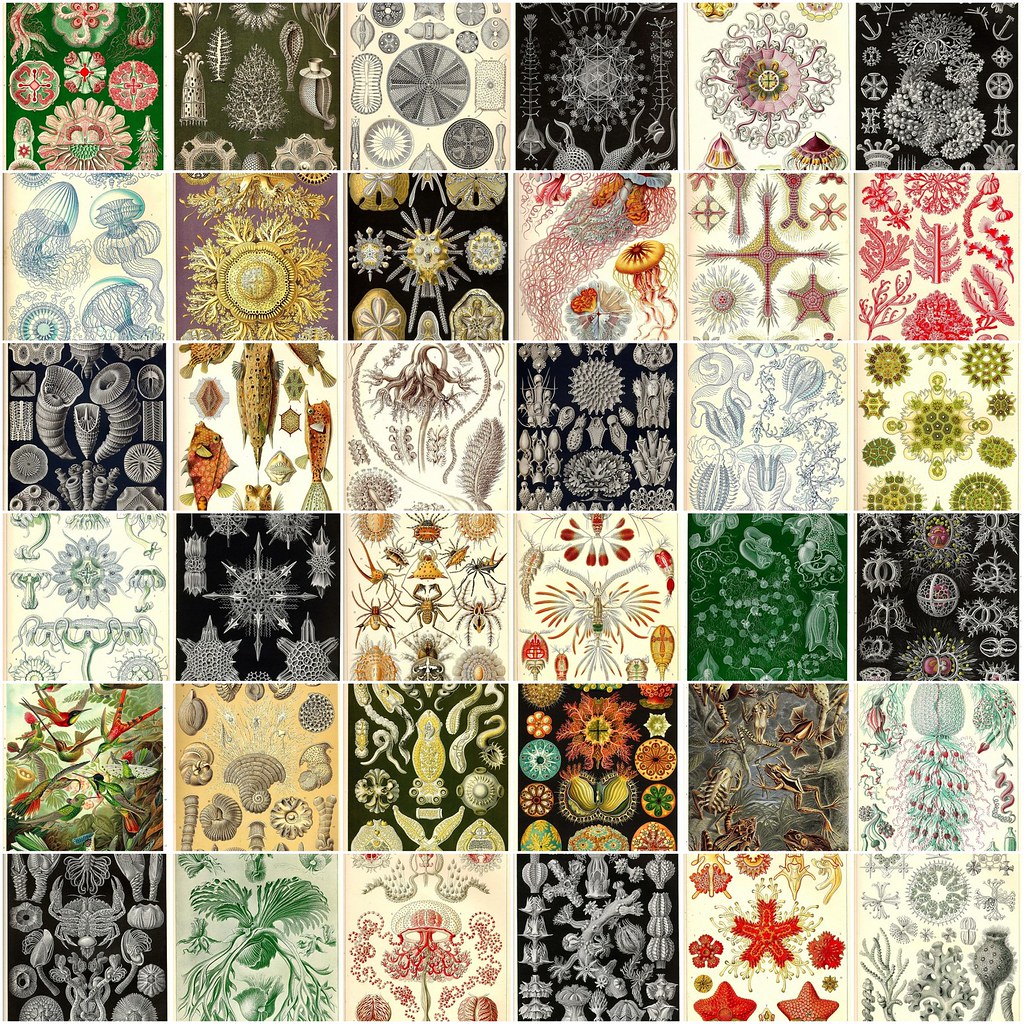Kunstformen der Natur (German for Art
Forms of Nature) is a book of lithographic and autotype prints by German
biologist Ernst Haeckel. Originally published in sets of ten between
1899 and 1904 and as a complete volume in 1904, it consists of 100
prints of various organisms, many of which were first described by
Haeckel himself. Over the course of his career, over 1000 engravings
were produced based on Haeckel's sketches and watercolors; many of the
best of these were chosen for Kunstformen der Natur, translated from
sketch to print by lithographer Adolf Giltsch.[1]
According to Haeckel scholar Olaf
Breidbach (the editor of modern editions of Kunstformen), the work was
"not just a book of illustrations but also the summation of his view of
the world." The over-riding themes of the Kunstformen plates are
symmetry and organization. The subjects were selected to embody
organization, from the scale patterns of boxfishes to the spirals of
ammonites to the perfect symmetries of jellies and microorganisms, while
images composing each plate are arranged for maximum visual impact.[2]
Among the notable prints are numerous
radiolarians, which Haeckel helped to popularize among amateur
microscopists; at least one example is found in almost every set of 10.
Cnidaria also feature prominently throughout the book, including sea
anemones as well as Siphonophorae, Semaeostomeae, and other medusae. The
first set included Desmonema annasethe (now Cyanea annasethe), a
particularly stunning jellyfish that Haeckel observed and described
shortly after the death of his wife Anna Sethe.
Kunstformen der Natur was influential in
early 20th century art, architecture, and design, bridging the gap
between science and art. In particular, many artists associated with Art
Nouveau were influenced by Haeckel's images, including René Binet, Karl
Blossfeldt, Hans Christiansen, and Émile Gallé. One prominent example
is the Amsterdam Commodities Exchange designed by Hendrik Petrus
Berlage, which was in part inspired by Kunstformen illustrations.


Geen opmerkingen:
Een reactie posten